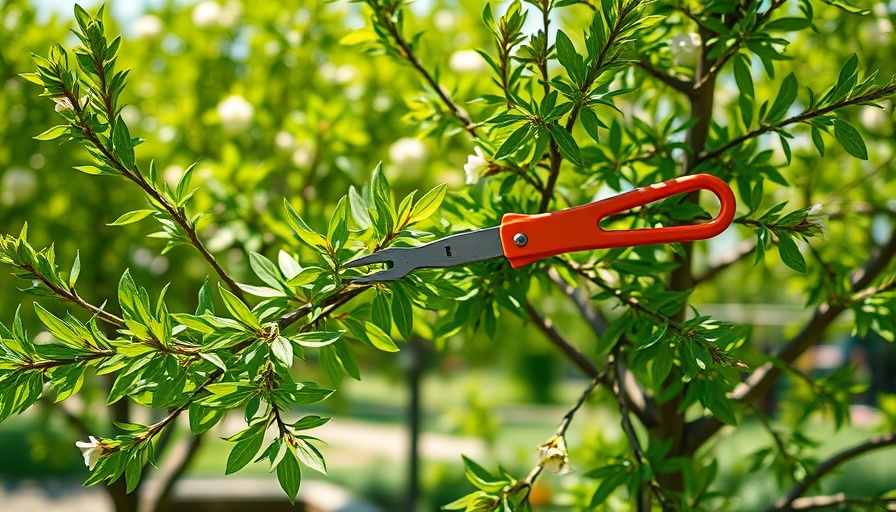
Why Pruning Is Crucial for Tree Health
Understanding how to prune a tree effectively goes beyond aesthetic appeal; it is an essential maintenance practice that contributes significantly to the tree’s health and longevity. Just like individuals require regular checkups, trees also need timely pruning to sustain their trajectory of growth. By eliminating dead, diseased, or overgrown branches, pruning opens up space for air and sunlight, invigorating the overall strength of the tree. This thoughtful intervention not only bolsters growth but can also help prevent pest infestations and fungal diseases that thrive in dense canopies.
The Right Tools for Pruning Success
Equipping yourself with the right tools is fundamental to a successful pruning session. While some branches only require a handheld pruner, others may demand the heft of loppers or a pruning saw. Battery-operated pruners with extendable poles can revolutionize how you prune, enabling you to reach higher branches without the need for a ladder. Here’s a brief overview of essential tools:
- Pruning Shears: Ideal for branches up to 3/4 inch thick, these are your basic go-to for smaller cuts.
- Loppers: For medium-sized branches (up to 2.5 inches), loppers provide extra leverage.
- Pruning Saw: Use this for larger branches (1.5 to 5 inches thick) that need a more robust cutting power.
When Is the Best Time to Prune?
Timing is everything in the world of tree care. The optimal time to prune largely depends on the type of tree and your local climate. For most trees, late in the fall as they go dormant is ideal, minimizing the risk of introducing diseases. However, light trimming in spring and summer can encourage healthy growth by allowing sunlight to penetrate through the branches, promoting vigor.
Step-by-Step Guide for Pruning
Now that you’re equipped with knowledge about tools and timing, let’s explore a practical, step-by-step approach to pruning. Always start with safety in mind: wear gloves and safety goggles, and assess whether you truly need to use a ladder. If you must, ensure it's stable and secure. Follow these steps for an efficient pruning session:
- Begin at the Bottom: Start from the base of the tree and work your way up, observing the overall shape.
- Assess Tree Structure: Identify the trunk and main branches. Remember, cut no more than 25% of the trunk if necessary.
- Cut with Precision: Make clean cuts just above where the branch meets the trunk or another branch to ensure the health of the tree.
Benefits of DIY Pruning
Engaging in DIY home improvement, such as tree pruning, not only enhances your garden's aesthetic appeal but also offers a therapeutic escape into nature. As you invest time in caring for these living entities, you foster a connection that can bolster your mental well-being. Pruning your own trees buries you deep in the mindful practice of nurturing life, reflecting a way of enhancing your overall health through simple yet impactful outdoor activities.
Common Misconceptions
Many believe that pruning is primarily for aesthetics or that it should only be done in spring. In reality, effective pruning is a year-round commitment to the health of your trees. Some might also think heavy pruning is always bad, but in moderation and at the right times, it encourages robust growth and shapes the tree positively.
Final Thoughts
Having a beautiful, healthy tree showcases not only your dedication as a homeowner but also your respect for the environment. Take the time to explore pruning methods and perhaps embark on this rewarding journey of DIY home improvement, helping your trees flourish while enriching your outdoor space.
 Add Row
Add Row  Add
Add 




Write A Comment